Gardens, regardless of their size, always have room for another plant. The allure of garden plants lies in their diversity and vibrant colors. Whether it’s perennials, shrubs, succulents, or year-round trees, there’s a perfect addition for every garden. Let’s delve into the top 10 garden plants that are sure to captivate every gardener’s heart.
Roses
Roses, renowned for their beauty and romance, come in a kaleidoscope of colors. They can be potted in small containers or planted directly in the soil. With straightforward maintenance, roses thrive in well-drained soil and can be propagated from cuttings. Their charm graces gardens and requires minimal care.
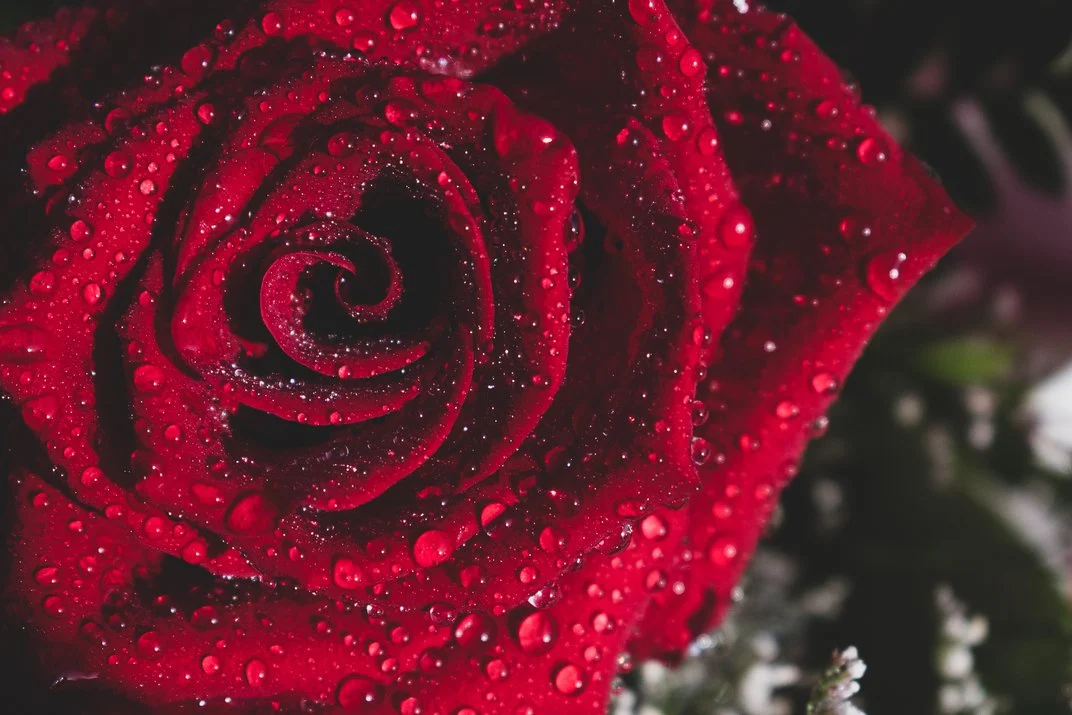
Hibiscus
Hibiscus, with its multitude of color variants and striking bell-shaped flowers, is incredibly adaptable. These hardy plants flourish in well-drained soil. Hibiscus needs only annual organic fertilizer and can withstand diverse conditions, making them a garden favorite.
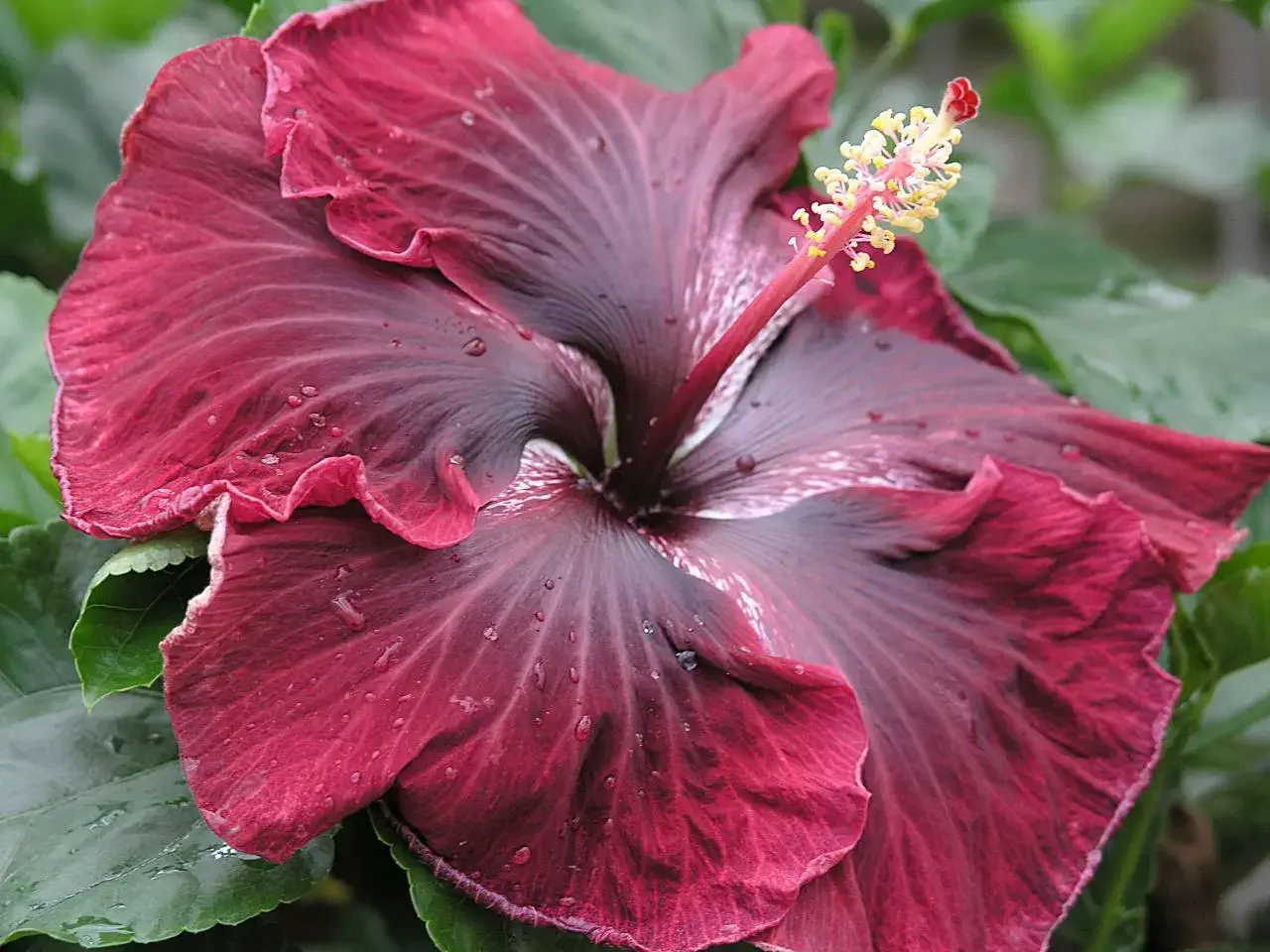
Jasminum Sambac
Also known as Mogra, Jasminum Sambac combines shrub and vine qualities and boasts over 200 species worldwide. This Indian flowering plant, with its pristine white blossoms, grows rapidly and trails gracefully. Beyond its ornamental appeal, Jasmine offers medicinal benefits, particularly for liver health. You can even infuse its petals into tea for a delightful jasmine flavor.
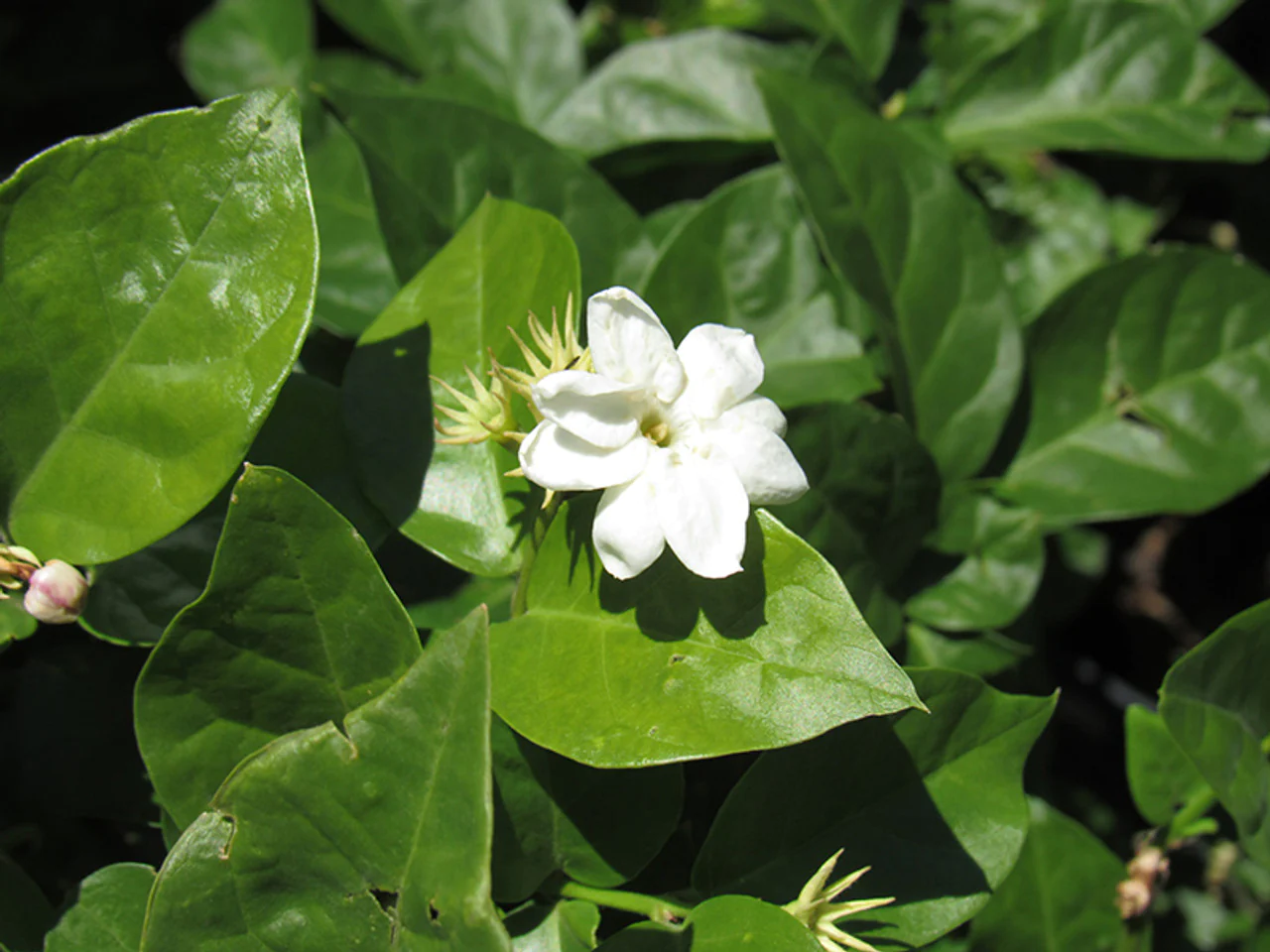
Plumeria
Stunning and decorative, Plumeria comes in various colors and resembles ornamental shrubs. Flourishing under full sunlight, they thrive in well-drained soil and require occasional pruning. While they tolerate sandy and windy conditions, they may struggle in cold climates. Plumeria can be planted both in soil and water-filled vases.
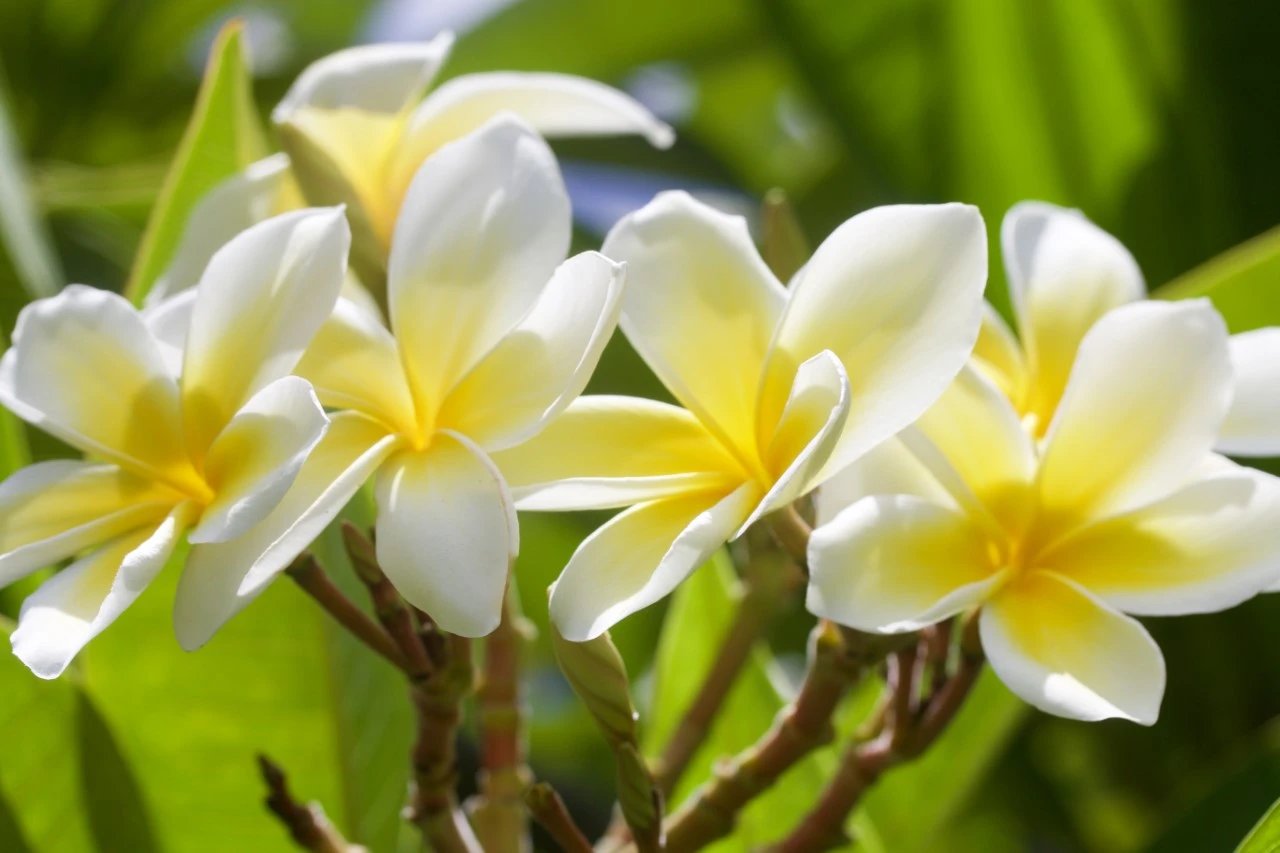
Croton
Garden Croton, available in vibrant green, yellow, and other hues, can reach impressive heights of up to 10 feet. These fast-growers thrive in well-drained soil and appreciate moist conditions. Nutrient-rich soil is not essential; providing organic fertilizer every six months will suffice.
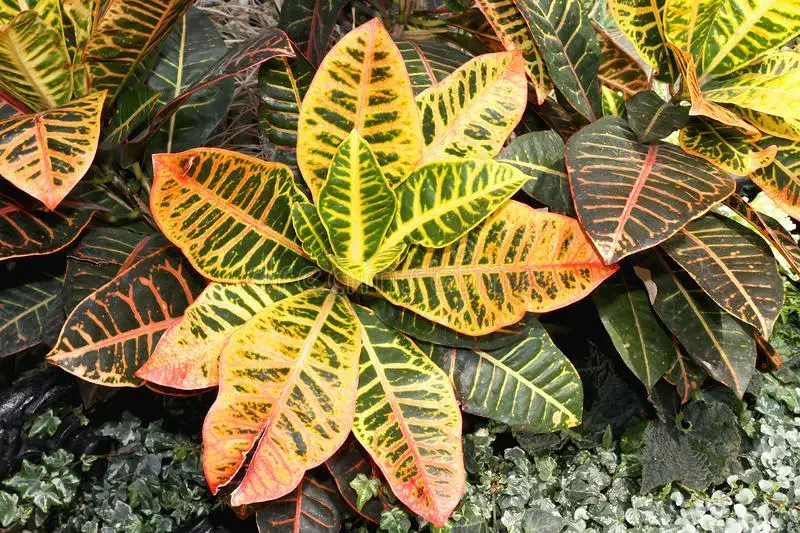
Bougainvilleas
Thorny and ornamental, Bougainvilleas come in an array of colors, making them ideal for decorating entrances and gardens. These fast-growing trailing plants often outgrow their pots and thrive in full sunlight. They are considered annual plants, adding vibrancy to any outdoor space.
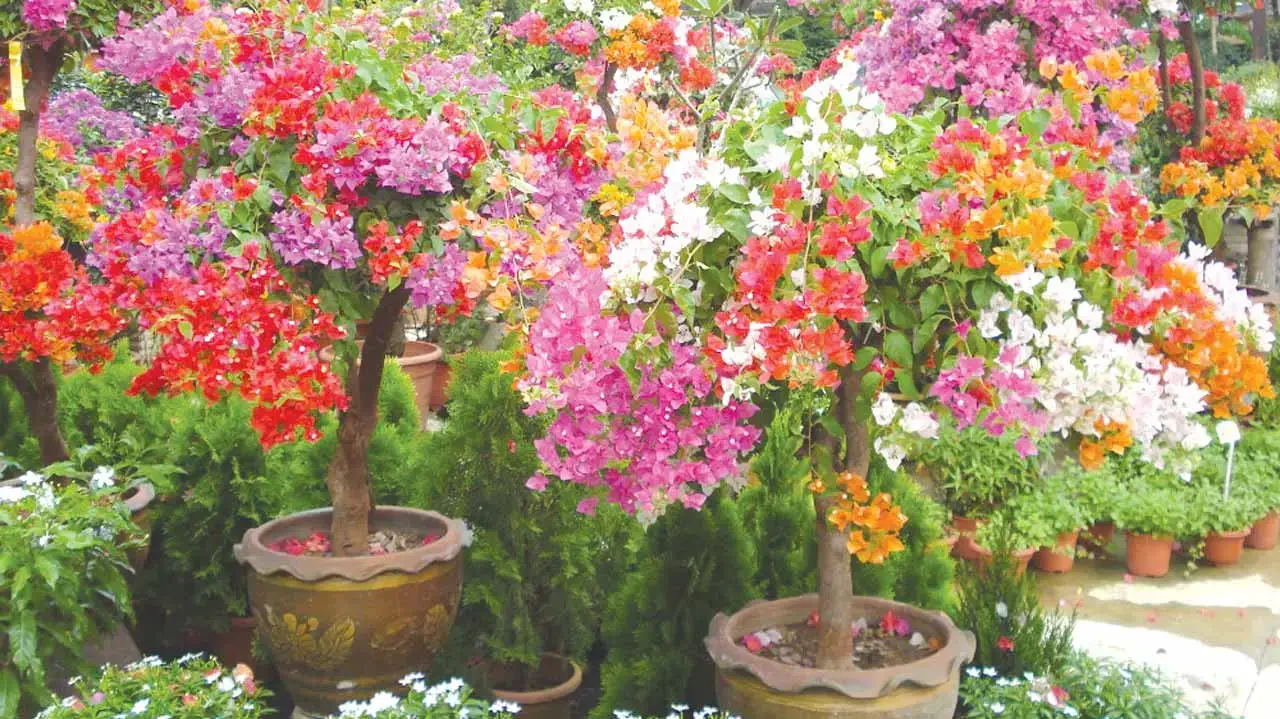
Ixora
Ixora, a major flowering plant group with around 562 species, falls under tropical evergreen trees and shrubs. These annual plants thrive in well-drained soil and full sunlight. Beyond their ornamental value, Ixora plants hold religious significance and even serve as Ayurvedic medicine.
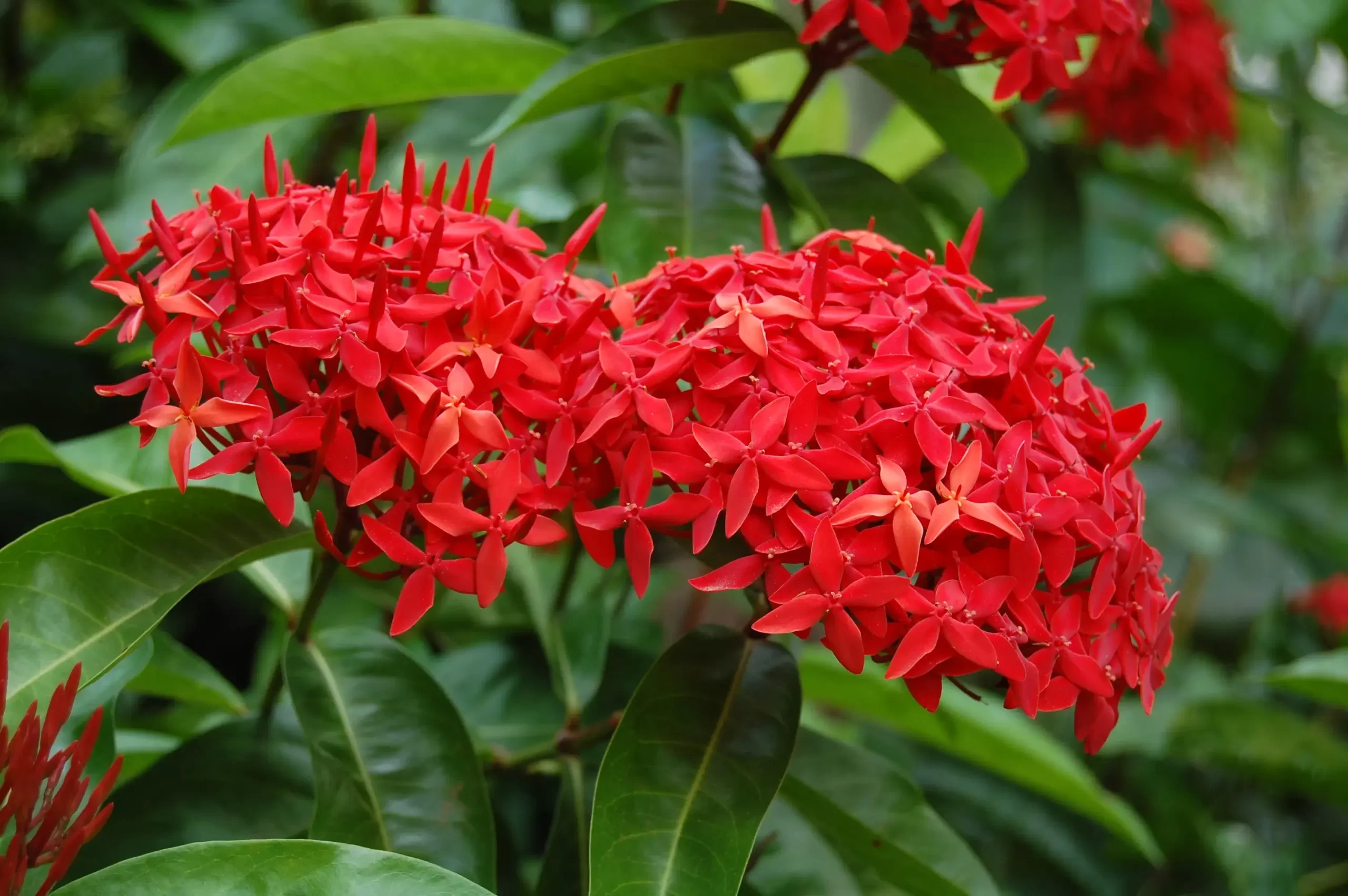
Cypress Golden
Forming a striking triangular shape when fully grown, Cypress Golden features thin, thread-like leaves in bright golden hues. This slow-growing plant takes about 20 years to mature to a height of 6-8 feet. While it resembles conifers, it doesn’t produce flowers.
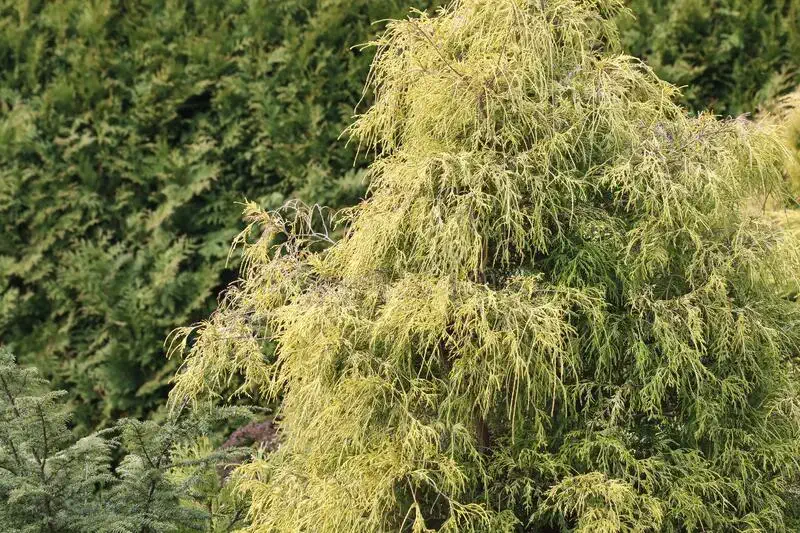
Adenium
Primarily a desert plant, Adenium flourishes in locations with ample sunlight. They require only moderate watering, typically once a week, as they favor moist soil. Propagated from seeds in well-moistened soil, Adenium plants take around 7-8 months to bloom with striking flowers.
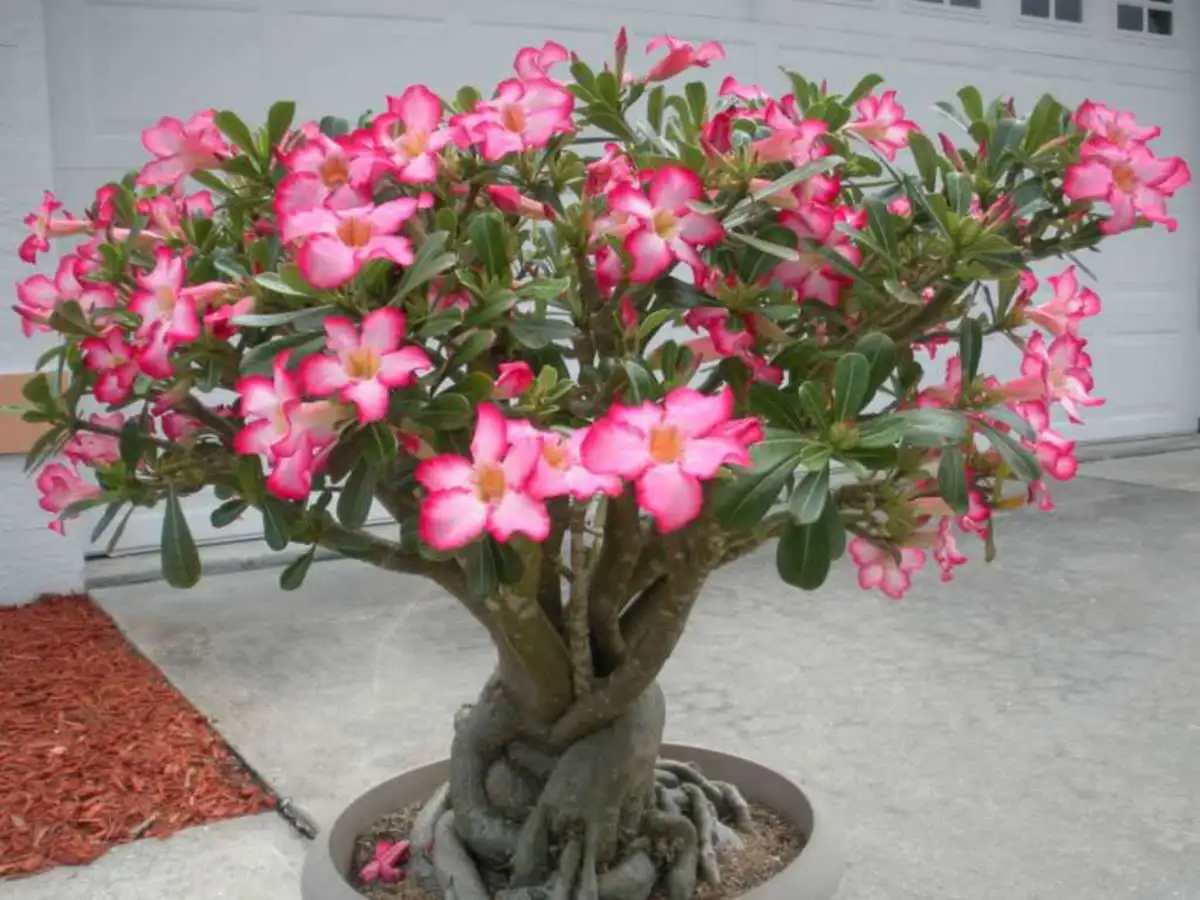
Palms
For those enamored with tropical landscapes, palm trees are the ultimate choice. In ancient times, Assyrians held palm trees in the highest regard. Palm trees instantly elevate the aesthetics of your space, provided you select the right variety to suit your environment.
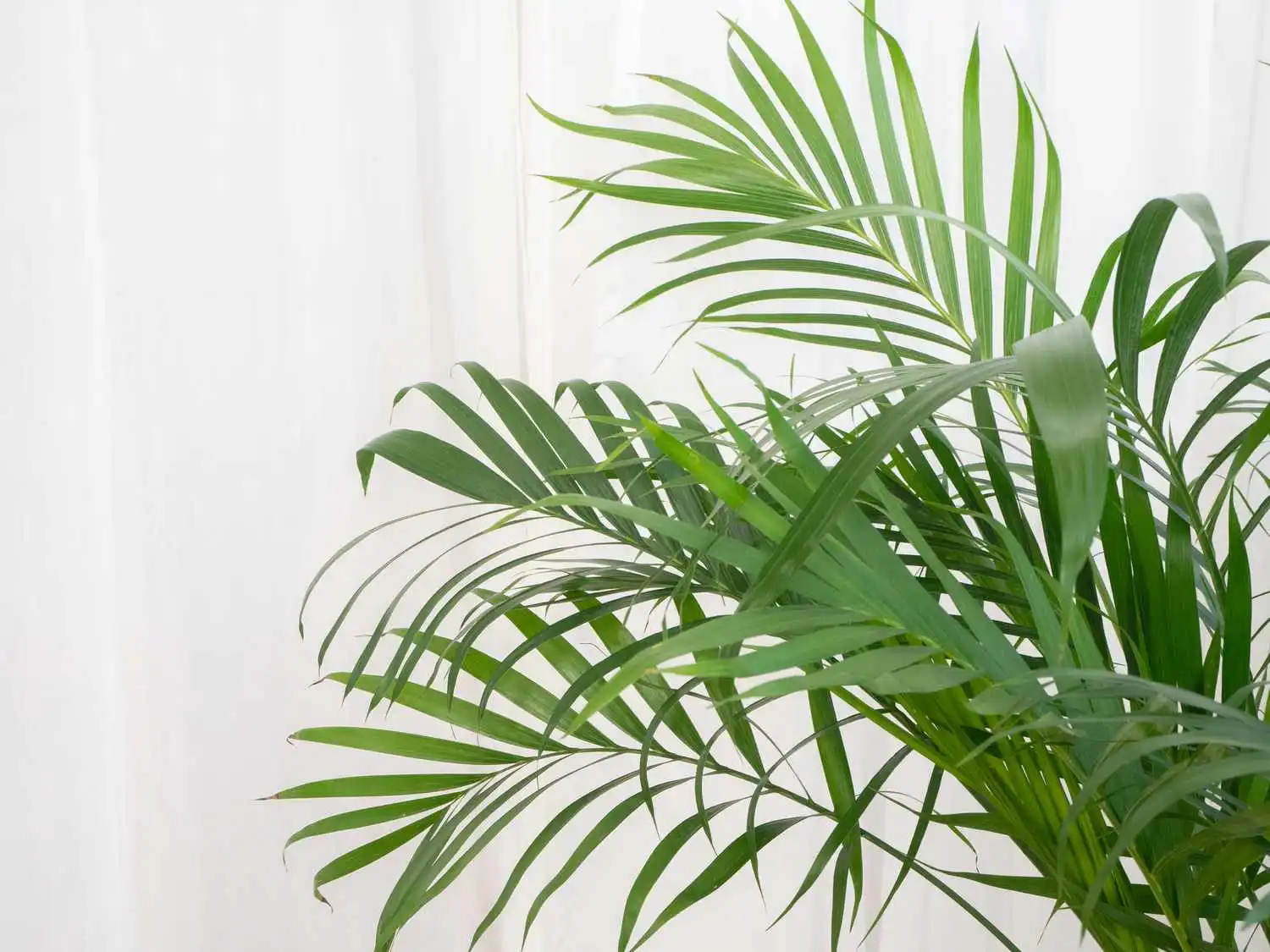
Frequently Asked Questions
Gardening is a delightful and rewarding pursuit, but it often raises questions about plant care, soil types, watering schedules, and more. Here, we provide comprehensive answers to some of the most common gardening queries to help you nurture your garden to its fullest potential.
What Is The Best Soil Type For These Plants?
The choice of soil type depends on the specific needs of your plants. Generally, the soil mix should possess the qualities of being well-draining while retaining essential moisture and nutrients. Achieving this balance is crucial for healthy plant growth.
A blend of organic matter like compost or peat moss, combined with a balanced fertilizer, creates an ideal environment for most plants. For those plants that require more acidic conditions, sulfur can be added to lower pH levels while also supplying essential minerals and micronutrients.
Additionally, maintaining a weed-free soil environment through the use of pre-emergent herbicides contributes significantly to the overall health of your plant collection.
How Often Should I Water These Plants?
Proper watering is paramount for the vitality and growth of your plants. Striking the right balance is key; overwatering can lead to root rot, while underwatering results in wilting and eventual decline.
Different plant types have varying water requirements. In general, most plants should be watered when the top inch of soil begins to dry out, typically once a week. However, during hot summers, some may require more frequent watering, whereas drought-tolerant varieties like cacti need less frequent moisture.
To ensure optimal watering, a simple practice is to test the soil’s moisture level by inserting your finger into it before each watering. This practice will help maintain your garden’s health and appearance.
What Is The Best Way To Fertilize These Plants?
Fertilizing your plants effectively involves using a slow-release fertilizer. This type of fertilizer gradually releases essential nutrients into the soil over an extended period, ensuring that your plants receive the necessary sustenance without the need for frequent applications.
It’s crucial to avoid over-fertilization, as this can harm the roots and lead to nutrient deficiencies in your garden. Careful consideration of the specific nutrient needs of your plants and adherence to recommended fertilization schedules are vital for their well-being.
How Should I Prune These Plants?
Pruning plays a crucial role in maintaining the health and vibrancy of your garden plants. The process entails trimming away dead or dying foliage and eliminating any diseased branches or stems.
For most garden plants, pruning is best performed in late winter or early spring, before new growth commences. Depending on the plant species, some may require more frequent pruning throughout the growing season to maintain their optimal appearance and health.
When engaging in pruning, utilize sharp shears or a knife, and ensure that each cut is clean and angled away from the center of the plant. Proper pruning techniques contribute to the overall well-being of your plants.
What Are The Best Companion Plants For These Plants?
Companion planting is a valuable skill in gardening. Pairing plants with complementary counterparts can create a thriving garden that bursts with life and color. Thoughtful selection of companion plants ensures harmonious growth while enhancing the beauty of your garden.
Consider the interactions between different plant species when planning your garden design. Some plants may attract beneficial insects or provide shade, while others might repel pests or improve soil quality. With careful consideration and planning, you can create a harmonious landscape where all your plants flourish together in perfect synergy, enriching your gardening experience.
With these top 10 garden plants, you can transform your garden into a thriving oasis of colors, fragrances, and natural beauty. So, no matter the size of your garden, there’s always room for one more captivating addition to your green haven.

